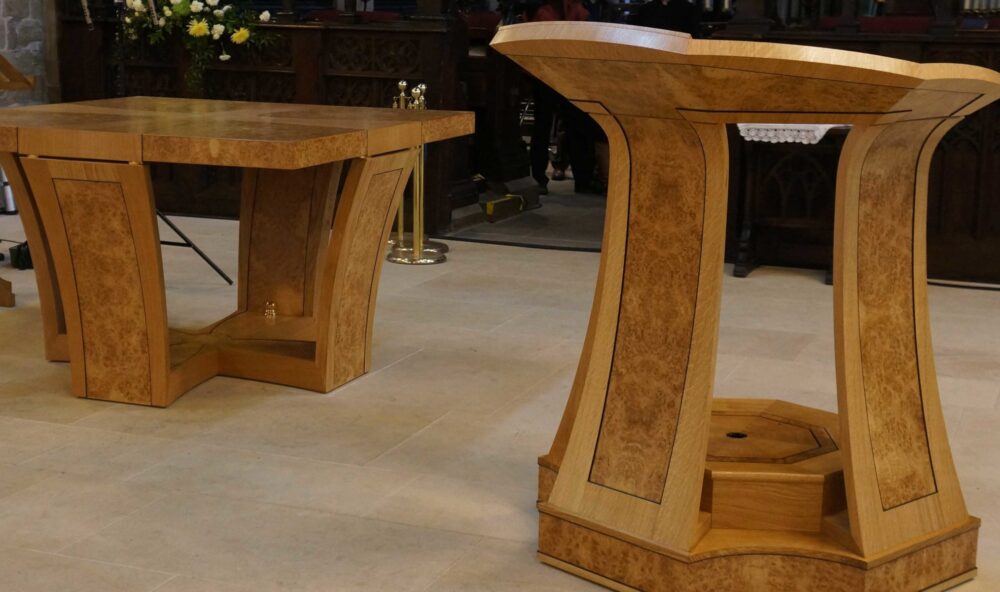How Abbeys and Cathedrals Can Adapt Without Losing Their Identity
Up and down the country churches, cathedrals and abbeys are removing their historic ecclesiastical furniture to make way for new interiors and a broader purpose.
The loss of pews, choir stalls, altars and ambos that have served generations of worshippers is hugely controversial, and understandably so. Often, as in the case of Bath Abbey, the refurbishment of these historic places of worship is accompanied by legal battles and protests as people strive to save the heritage that is being taken out and sold off.
The motivation for transforming medieval and historic buildings like Bath Abbey is to create a space that has the flexibility to serve current and future generations.
Having been involved in a number of such projects ourselves, we understand deeply the sensitivities involved.
Whilst church and cathedral communities are keen to adapt their space to allow it to serve the community more fully, we are always keen to ensure this is not done at the expense of the building’s character and solemn purpose as a place of worship. The architecture, history and fabric of the building should be complemented and enhanced by any modernisation that takes place. Whenever we are designing for an ecclesiastical restoration project, such as the work we have completed for Wakefield Cathedral, any new furniture fits seamlessly into its surroundings and looks as if it has always been there, echoing the style of its predecessors.
Likewise, the space is planned around its role as somewhere for congregations to gather and sacraments to take place. Against this backdrop, other community functions can be accommodated in the design of the furniture and interiors. Often this means it is crafted and engineered to be mobile and flexible, allowing the space to be opened up for parent and toddler groups, food banks, debt advice services, job clubs and other activities that support those living and working nearby.
With this repurposing come new opportunities to hire out the space and provide an income which can be used to maintain the historic architecture, repair the roof and restore the artefacts within the building.
One of the arguments against restoration and renovation is that the historic craftsmanship of the choir stalls, pews and other furniture will no longer be in its original home or available for the public to see. This is a powerful point and one that we, as master craftsmen ourselves, respect and sympathise with. That is why, when communities are balancing the demands of the modern and future life of the church with preserving its heritage, we feel an overwhelming duty to design ecclesiastical furniture that has beauty and character to complement its surroundings and durability and purpose to serve many generations to come.
If you have a sensitive ecclesiastical or historic restoration project to discuss contact us on 0113 256 7376.

